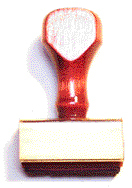45: Language1
The quick brown fox Se swiðe brun fox2 jumped over the lazy dog. ofer ðone lætne hund hlypode. The poet worked quietly Se scop swigiendlice sceop in spite of the riots in the streets. ongean ðara hilda in ða lanan. A few extra seats wæron set up on þe vast stage An feawe sparedon setlu were gesetton on the huge þet as dessert wæs served. swa swotmettas wæs giefen. Se dæg in June wæs miclum beorht The day in junius was very bright except for a bealu morning haze. nefne for a baleful morgen mist. Ðis loafs of bread easier ettan beoð These hlaf of bread ieð to eat than wæron ða loafs ic ærra æton. þonne were the hlafas I earlier ate. Because þu us þus dydest, For þon thou did thus to us, we hit þe forgyldað. we will thee pay back. Ðine voice ic gehiere, Thine stefne I hear, ac ic ne know hwær þu eart. but I wat not where thou art. Wes þu gestrangod Be thou strong, and ne ne in dread þu þe. and do not yourself be ondræd. Ða englas dydon swa heom beboden wæs, And the angels did as he bade them, and he astah on heofonas. and he arose to heaven. Meotod ana wat hwyder seo sawul The creator only knows sceal syððan hweorfan. whether the soul shall since return.
